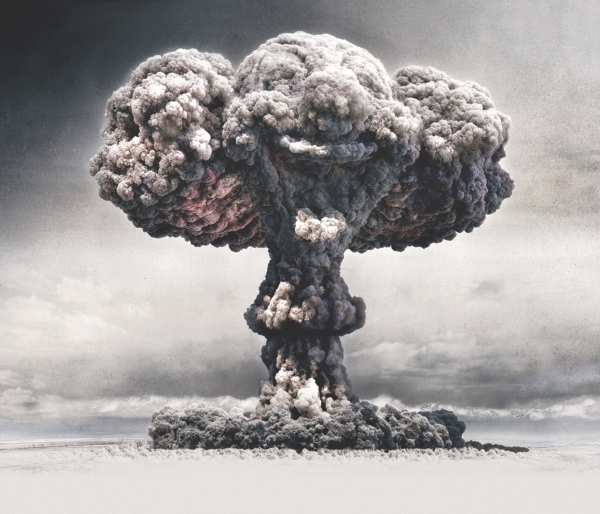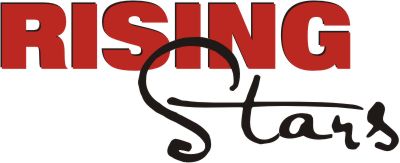 GOODBYE Blue Sky
GOODBYE Blue Sky
By Bareesh and Moyukh
“Now I am become Death, destroyer of worlds.”
- Oppenheimer (quoting Bhagavad Gita)
1941. December 7th. The sun rises over Hawaii. It's quiet as the soldiers wake up at US Naval Base, unaware of their doom. On the other side of the Pacific, 353 fighter planes have taken off. The Hawaii Operation, as the Japanese military termed it, had been initiated. What followed was known as the Battle of Pearl Harbor. More than 180 US aircraft were destroyed and 2402 men lost their lives in one of the most iconic shock blitz attacks in military history. The war between the US and Japan began.
1945. The war is nearly over. The aftermath of the violence is evident all throughout Europe. Germany has surrendered and Berlin lies in ruins. Adolf Hitler has disappeared. The Allied Nations are still wary of the threat from the East. Japan has not given up. For them, the fight still rages on.
During the war, all participants dreamt of a super-weapon. A weapon to end the war, a weapon to stamp their superiority over the rest of the world. The US perfected it - the dream child of Project Manhattan.
President Harry Truman knows the Japanese will not quit. He knows that they must be wiped out. He gives his executive order. Scientists work and develop what is now known as “Fat Man” and “Little Boy”.
Tokyo is already in ruins. Kyoto, the same. No. That will not do. To the South is the city of Hiroshima. It still stands largely unscathed. Destroying it would send the message properly. Yes. Nagasaki is also situated nearby. And so, two targets were chosen.
***
Commander Colonel Paul W. Tibbets was not a good student as a child. But he was a gifted pilot. He rose through the ranks quickly. He was also the pilot of the “Enola Gay”; the first airplane to drop an atomic bomb in the history of warfare.
The 509th Composite Group, led by the Enola Gay and accompanied by two other airplanes, “The Great Artiste” and the plane later named “Necessary Evil”. At 8:15, August 6th, 1945 the bomb dropped over Hiroshima. 43 seconds later, “Little Boy” exploded, immediately killing 80,000 people. Another 100,000 died in the week that followed.
Paul W. Tibbets punches the air with gusto. His job is done. He radios in, shouting ecstatically as the smoke rises behind him. In his plane, he cannot hear the screams. Paul Tibbets retired a Brigadier General. He died in 2007. He had no regrets over taking the lives of nearly 200,000 people.
The Great Artiste, piloted by Charles W. Sweeney, was witness to the horror committed on August 6th in Hiroshima.
Three days later, Sweeney returned to South Japan. His plane, Bockscar, carried “Fat Man”. Fat Man landed in Nagasaki. 50,000 more died. Like in Hiroshima, over the next week, radiation and burns claimed another 40,000. Sweeney, unlike Tibbets, was repentant. As he flew back to base, sweat covering his face, he wondered, What had he done?
***
Tsutomu Yamaguchi never wanted the war. He barely managed to make ends meet - war was for him a scarcity of basic human needs. He probably did not give a second thought to the war when he went to Hiroshima on a business trip in the summer of 1945. Imagine him walking off with a smile on his face as he thought of seeing his family after three months. It was the 6th of August. Suddenly a flash in the sky. Next moment he was lying with torn ear drums, temporarily blinded and with severe burns all over.
Back in his home in Nagasaki, bandaged all over, his story was met with incredulity. How could one single bomb wipe out so many? As he told his story to his Supervisor, a plane flew over. Sweeney dropped Fat Man; ground zero was only 3 km from where he was. This time though he escaped unhurt, he was left with his bandages all ruined. No one was there to treat him. Yamaguchi became a forerunner for the abolition of atomic bombs. He died in January 2010.
***
Two flashes of light. Two towering pillars of smoke. The world saw death. And what death it was. Nobody had seen such a spectacle before. In the weeks that followed, deaths counted more than 250,000 in the two cities. Only about half died from the initial blast. Fat Man and Little Boy were more than bombs. They were psychological weapons. They were a display of superiority. They were something that could stop the Japanese in their tracks. Project Manhattan was a success. The Japanese, wounded and beaten, surrendered.
While Hiroshima and Nagasaki are the only incidences of the use of nuclear weapons in warfare to date, that is not to say there haven't been scares. The world held its breath during the Cold War when it appeared that the US and Russia would begin a nuclear apocalypse.
This year was special for Japan's people and especially those who remember the horror. The familiar enemy of radiation threatened to return once more when destruction emerged from the ocean earlier this year. Fukushima is still under quarantine; Japan's anti-nuclear movement now has more ammunition for their cause.
More so than anything, Project Manhattan was a lesson, a lesson in the devastating power of man and science. Nuclear weapons still exist. Military powers around the world still house nuclear warheads. It's not too late to blow the world sky high. But perhaps, they will come to their senses. Watching the solemn ceremonies at Hiroshima's Peace Memorial, that is all you can really hope for. Or is that just wishful thinking?
[One of the writers, Bareesh, attended the Hiroshima Peace Memorial Ceremony in Hiroshima a few years ago.]
